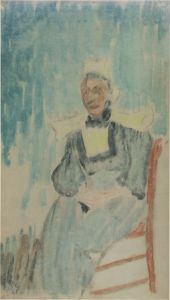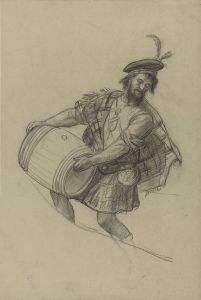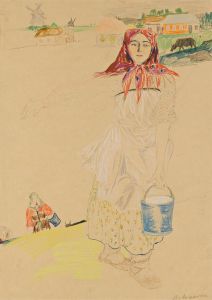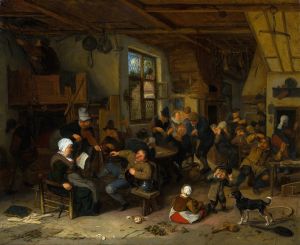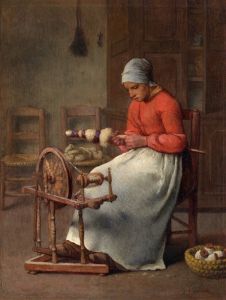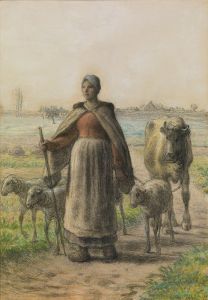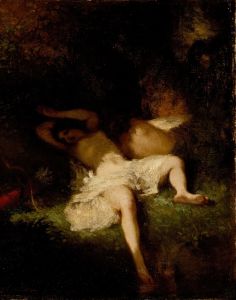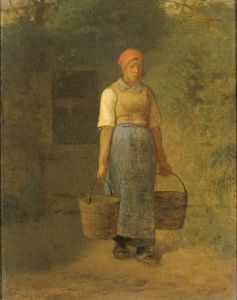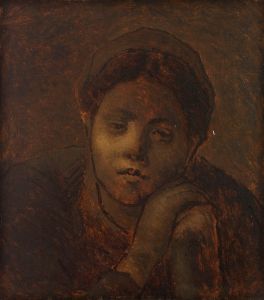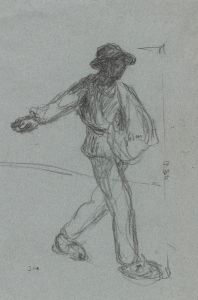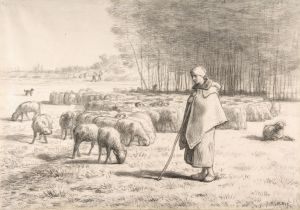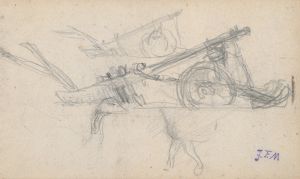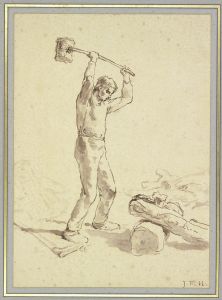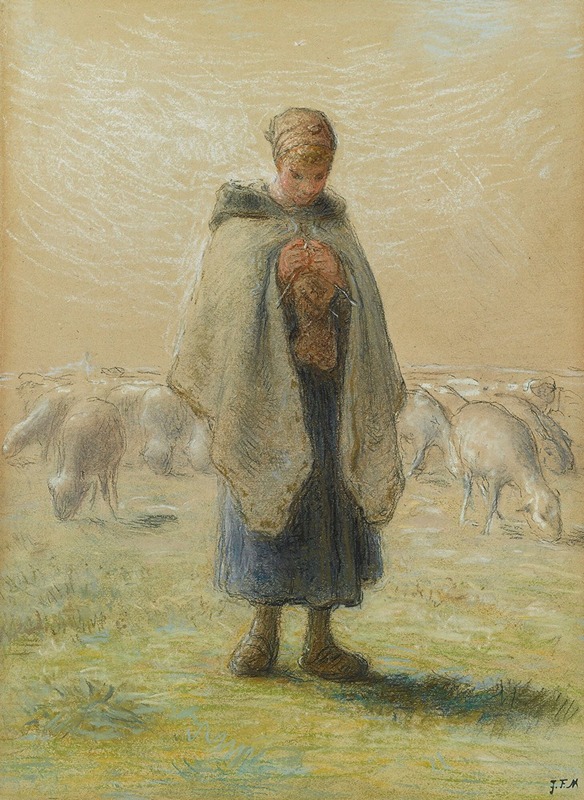
Petite bergère tricotant
A hand-painted replica of Jean-François Millet’s masterpiece Petite bergère tricotant, meticulously crafted by professional artists to capture the true essence of the original. Each piece is created with museum-quality canvas and rare mineral pigments, carefully painted by experienced artists with delicate brushstrokes and rich, layered colors to perfectly recreate the texture of the original artwork. Unlike machine-printed reproductions, this hand-painted version brings the painting to life, infused with the artist’s emotions and skill in every stroke. Whether for personal collection or home decoration, it instantly elevates the artistic atmosphere of any space.
"Petite bergère tricotant" (Little Shepherdess Knitting) is a painting by the renowned French artist Jean-François Millet, who is best known for his depictions of rural life and peasant subjects. Millet was a leading figure in the Barbizon School, a movement that emerged in the mid-19th century, emphasizing realism and a focus on the natural world and rural life. This painting is one of many works by Millet that highlights his interest in the daily lives of peasants and their connection to the land.
Created in the mid-19th century, "Petite bergère tricotant" exemplifies Millet's characteristic style, which combines a realistic portrayal of rural subjects with a sense of dignity and humanity. The painting depicts a young shepherdess engaged in the simple, everyday task of knitting. She is seated in a pastoral setting, surrounded by the natural landscape that Millet often celebrated in his work. The composition is serene and intimate, capturing a moment of quiet reflection and industriousness.
Millet's work is often noted for its muted color palette and soft, diffused light, which can be seen in "Petite bergère tricotant." The use of earthy tones and gentle contrasts creates a harmonious and tranquil atmosphere, emphasizing the peacefulness of rural life. This approach reflects Millet's deep appreciation for the natural world and his desire to portray the beauty and simplicity of peasant life without romanticizing or idealizing it.
The subject matter of "Petite bergère tricotant" aligns with Millet's broader artistic themes, which frequently focus on the dignity of labor and the nobility of rural life. By choosing to depict a young shepherdess, Millet highlights the role of women in the rural economy and their contributions to the household and community. The act of knitting, a common domestic task, is portrayed with a sense of reverence and importance, underscoring the value of everyday activities.
Millet's work, including "Petite bergère tricotant," had a significant impact on the art world and influenced subsequent generations of artists. His focus on realism and the depiction of rural subjects resonated with the social and political climate of the time, as industrialization and urbanization were transforming society. Millet's paintings offered a counter-narrative to these changes, celebrating the enduring connection between people and the land.
"Petite bergère tricotant" is a testament to Millet's skill as an artist and his commitment to portraying the lives of ordinary people with empathy and respect. The painting remains an important example of 19th-century French art and continues to be appreciated for its aesthetic qualities and its insight into rural life during this period. Through works like this, Millet has left a lasting legacy that continues to inspire and resonate with audiences today.





